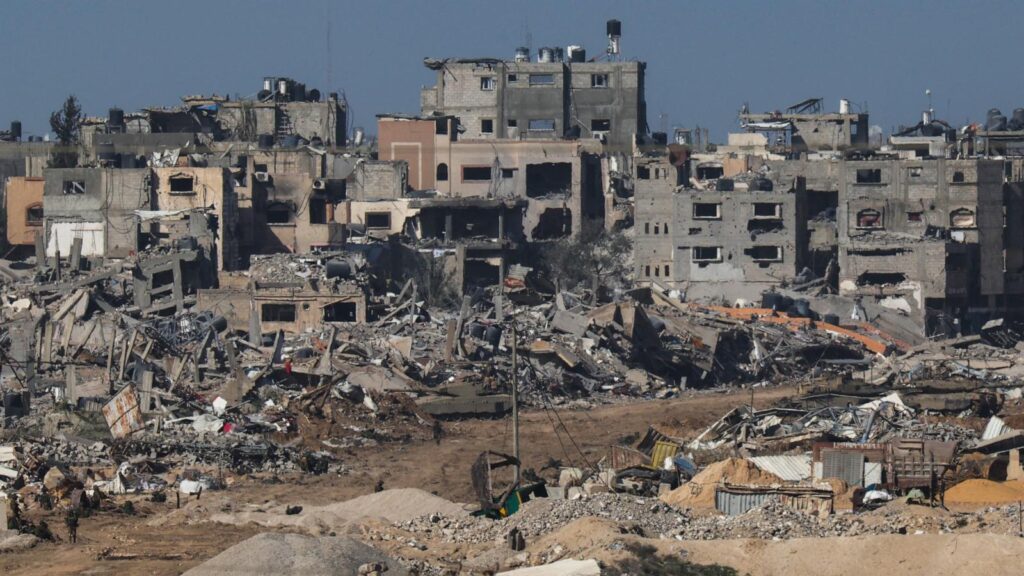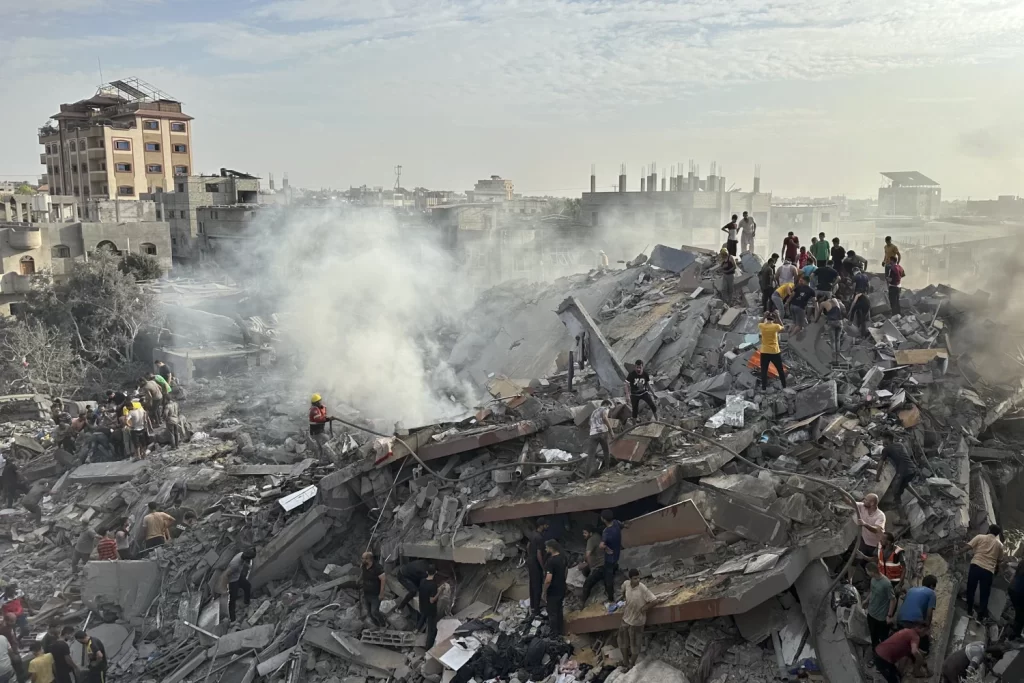
Following 33 years of ongoing conflict between Israel and Palestine, Hamas invaded Israel on October 7th 2023. 1500 Hamas fighters swarmed in and rockets were set off beginning at 6am, leading to the death of 1200 people. Hamas fought with Israel over territorial disputes, political motivations, and Israeli blockade and occupation. They wanted to establish an independent Palestinian state, including Gaza, the West Bank, and East Jerusalem. Israel’s occupation involves military rule, settlement expansion, and restrictions on the movement of Palestinians. Their settlements, considered illegal under international law, have expanded over the years, further complicating efforts to reach a solution in war. This blockade in the Gaza strip severely restricts the movement of people and goods in and out of Gaza, leading to economic hardship and crises. Hamas also aimed to gain political leverage and support from Palestinians which is the reasoning behind their invasions to demonstrate commitment and relevance. The conflict between Israel and Palestine, aggravated by territorial disputes, political motivations, and the blockade in Gaza, has led to ongoing violence highlighting the complex nature of the situation.
Heres a quick timeline overview:
1990:
Ongoing peace talks to settle the conflict between Israel and Palestine.
Aimed to find a resolution to the longstanding Israeli-Palestinian conflict.
Negotiations focused on key issues such as borders, settlements, refugees, and the status of Jerusalem.
1995:
Prime Minister of Israel, Yitzhak Rabin, assassinated by an Israeli man named Yigal Amir on November 4 in Tel Aviv.
Rabin’s assassination deeply impacted the region and the peace process.
Rabin was a key figure in the Israeli-Palestinian peace negotiations and a proponent of the Oslo Accords.
Assassination led to widespread shock and outrage.
Several attacks carried out by Palestinian groups such as Hamas followed, targeting Israeli civilians and security forces.
1993: Oslo Accords:
Landmark agreements between Israel and the Palestine Liberation Organization (PLO).
Facilitated by Norwegian diplomats and mediated by the United States.
Included mutual recognition between Israel and the PLO.
Established the Palestinian Authority (PA) as an interim self-governing body in parts of the West Bank and Gaza Strip.
Provided a framework for future negotiations on key issues such as borders, settlements, and the status of Jerusalem.
Represented a significant breakthrough in Israeli-Palestinian relations.
2014: Gaza War commences:
Conflict erupted between Israel and Hamas.
Started with clashes between Israeli forces and Palestinian militants, including rocket attacks from Gaza and Israeli airstrikes.
Resulted in significant casualties and widespread destruction, particularly in Gaza.
Lasted 50 days and ended with an Egyptian-brokered ceasefire agreement.
Highlighted ongoing tensions and violence between Israel and Hamas, hindering efforts for lasting peace.
Additional timeline content:
•The Second Intifada (2000 – 2005): Israeli political leader, Ariel Sharon, visited the Temple Mount/Haram al-Sharif which led to violent demonstrations, marking the beginning of a second intifada.
•The Passover Massacre (March 2002): A terrorist attack killed 30 people at a Passover celebration, and the Israeli military reoccupied portions of the West Bank.
•Israeli West Bank Barrier (June 2002): Israel started to construct a security barrier in the West Bank to protect themselves from terrorist attacks; the wall impedes Palestinian movement and commerce.
•Israeli Withdraw from Gaza and Hamas Gain Control (2005 – 2007): Israel began a unilateral withdrawal of military forces from the Gaza Strip, and Hamas took over the Gaza Strip in 2007.
•Israel Attacks the Gaza Strip (2008): Israel launched nearly eight hundred rockets, attacking the Gaza Strip.
•Operation Protective Edge (2014): Israel invaded the Gaza Strip and killed about two thousand Gazans; war ended after a cease-fire was reached among the US, Israel, and other regional powers.
•Recognizing Jerusalem as the Capital of Israel (2017): U.S. President Donald Trump formally recognized Jerusalem as the capital of Israel, instigating protests and violence throughout East Jerusalem, Gaza, and other regions.
•2021 Israel-Hamas Crisis (2021): Evictions of Palestinians in East Jerusalem and clashes at al-Aqsa Mosque sparked conflict between Israel and Hamas. Over two hundred people in Gaza were killed.
•2022 Israeli-Palestinian Conflict (2022): Israel launched a counterterrorism operation in the West Bank in response to attacks by Palestinians against Jewish Israelis, the deadliest year since 2005.

Why did Hamas invade Israel?
Territorial Disputes: One of the primary reasons for the Hamas attacks is the ongoing conflict over territory and land. Hamas seeks to establish an independent Palestinian state, including Gaza, the West Bank, and East Jerusalem, which are currently under Israeli control.
Israeli Occupation and Blockade: Israel’s occupation involves military rule, settlement expansion, and restrictions on the movement of Palestinians. Their settlements in the West Bank, considered illegal under international law, have expanded over the years, further complicating efforts to reach a solution in war. The blockade of the Gaza strip severely restricts the movement of people and goods in and out of Gaza, leading to economic hardship and crises.
Political Motivations: Hamas aims to gain political leverage and support from the Palestinians by presenting itself as a resistance movement against Israeli occupation. Launching attacks against Israel helps Hamas demonstrate their commitment to this cause and to maintain its relevance among Palestinians.
Original Slideshow:
Sources:
- https://www.bbc.com/news/newsbeat-44124396?sa=D&scrlybrkr=6c7974ff – This source is from BBC, a very reliable and popular news source, and the whole page seems to contain legitimate and trustworthy information
- https://www.cbsnews.com/news/map-images-israel-gaza-strip-hamas/ – CBS news is another reliable and widely used news source and is relatively biased when it comes to political stories
- https://www.britannica.com/event/Israel-Hamas-War – Britannica is a very trustworthy database that contains high quality information about current events. There are also lots of hyperlinks in the article, meaning that the source has solid evidence to back up their writing.
- https://prospect.org/world/2024-03-20-what-really-happened-on-october-7/ – The American Prospect is a legitimate news source, even though it can skew left. The pictures are cited well, and there are links in the article that reference outside sources. Media Bias and Fact Checking websites discern that this source is highly factual.
- https://www.csis.org/analysis/why-hamas-attacked-when-it-did – The news source is legitimate and reliable, and the author of the article is established and has done many other trustworthy articles in the past. There are also lots of links and citations, showing that their writing is backed up by good evidence.

Comments are closed.